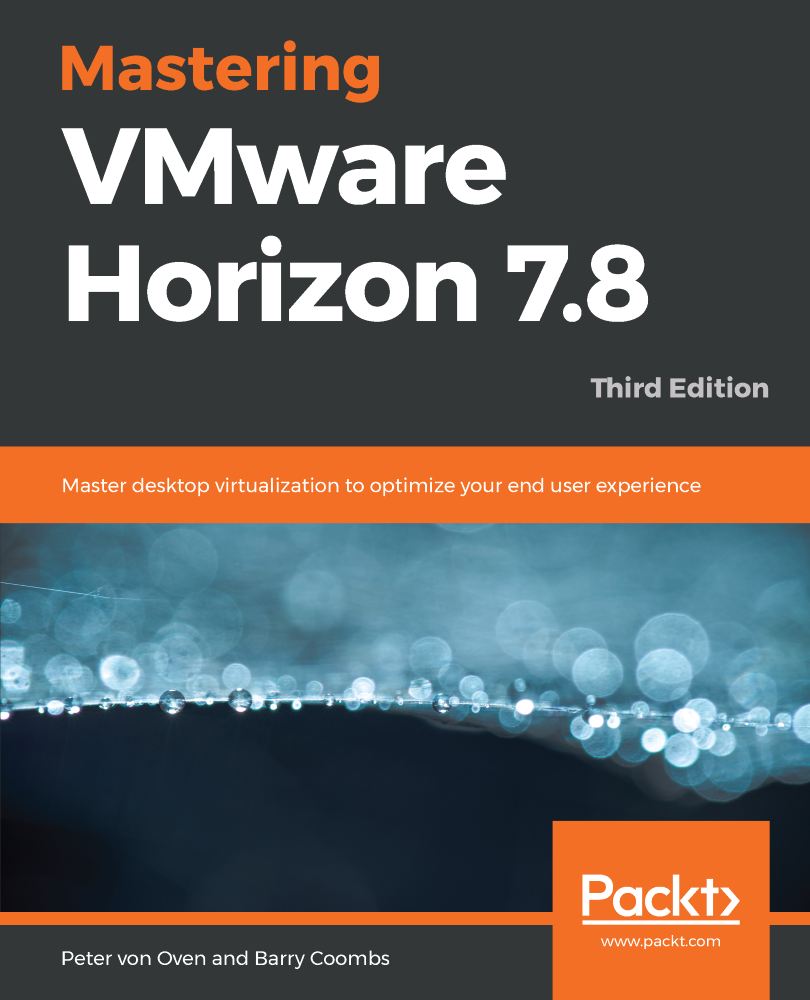I’m excited to share this contributed post as it’s a topic and message I believe is quite important. In this new edition, end-user computing expert Peter von Oven writes of the user onboarding process and taking a user-centric approach to the transformation journey.
I love the approach of Putting User Experience at the Center of the Workspace. It’s an approach that is near and dear to Liquidware; and a core tenant of how Stratusphere UX has been designed. Peter’s book is focused predominantly on practical and actionable methods to best manage the user lifecycle of VDI atop the VMware platform, but the overall message is relevant for all user transformations—physical, virtual or cloud-delivered.
Look for it now at Packt Publishing and very soon on Amazon. Congrats Peter. –Kevin

Special Guest Blog
Author: Peter von Oven
(peter@dropletcomputing.com)
So now that I have completed my 11th book on virtual desktop infrastructure with VMware Horizon (shameless plug box ticked), I’ve had chance to reflect on the content. The idea of the book was not to be just another installation guide. After all, the technology piece is easy, but the why do it in the first place, and how to do it is far more of a challenge. Instead, the idea is to treat the whole project as a journey, starting with what initiated the project in the first place, building the business case, analysis, proof points, and then deploy some form of desktop delivery technology. Whether that be cloud-based, on premises VDI, or even physical desktops for that matter. This is where the Liquidware technology comes into its own and becomes your travel companion for the journey.
So, to put that into context. The journey undertaken in the book in this case consisted of three distinct parts. Planning the journey, so looking at what you have in place today, planning how to get there, and then looking at the destination; where do you want to end up at. One important point to highlight is that these parts are not to be taken in isolation and form the entire itinerary just to go back to the journey analogy.
Planning the End User Journey
How does that relate to the Liquidware Stratusphere UX solution? First off in the planning stages, and understanding what you have in place today, or finding your baseline. Afterall, there is no point looking at planning any journey if you don’t know where you are starting from. For example, in my role as an EUC consultant I often ask the customer the question of “how many apps do you have?” Quite often the answer starts with “erm…” or “about”. Those that do roughly know, typically I would end up having to apply the rule of ten. Whatever number the customer gives you, you simply multiply that by ten to get the real answer. Stratusphere UX can answer this question easily and precisely. It builds that baseline of your desktop estate, creating a comprehensive inventory, right down to the level of what resources are being consumed, and even a complete breakdown of the login process. Not only that, it can tell you which machines are ideal candidates for virtualizing, or can be migrated to a cloud-hosted workspace. Equally it will tell you those that would not be, complete with the reasons why.
Now armed with that baseline and a complete picture of your environment, the journey can continue, and you can start testing and deploying your chosen technology platform. But how do you know you are headed in the right direction? The answer is Stratusphere UX again, this time with its ability to take the baseline of your environment and comparing it to the solution you are testing. In this scenario Stratusphere UX helps fine-tune the environment before you deploy into production and onboard your end users. You can easily tune the environment to ensure the end user experience is at its optimum. This is the key advantage that Stratusphere UX offers. Although it can monitor the infrastructure, it concentrates on the end user experience. Perfect, as the end users and their experience is going to make or break the environment and so delivering them the best experience possible can only be a big plus point. It’s the difference between success and failure. You can deploy the fastest most up to date infrastructure, yet if a user logs on and receives a poor performance then its game over. In this scenario often infrastructure monitoring tools report that all is well, yet the user reports otherwise. Stratusphere UX turns this the other way round and starts with the end user.
Journey’s End. Or is it?
Now at this point organizations have assessed, tested, and deployed their desktop environment and so think they are done. Wrong. The onboarding may have been completed, however the end users’ real journey has just begun. What happens if their circumstances change? Maybe they change roles and therefore app requirements change. Overtime apps and OS’s will update, meaning a potential change in resource requirements. It’s a strong possibility that the first time you’ll know about it is when they call into the help desk to report an issue with performance. This is where the ongoing monitoring Stratusphere UX delivers comes into its own. The ability to track usage and resources proactively is invaluable. As is the ability to check whether the issue is affecting one user or your whole user estate, before it becomes a bigger issue. But that’s just the start.
Summary
The biggest takeaway for me having Stratusphere UX along for the ride as the book moved through its journey along the different project phases – from project definition, design and testing, deployment, and ongoing management – is that it’s not just about assessment. It’s not just about tuning, and it’s not just about management and troubleshooting. It’s all about end user lifecycle management. How to understand your current environment and plan the onboarding of the end user onto a new platform, whether VDI, cloud-based desktops, or even a hybrid approach. Then, once onboarded, to continue to manage that user for the lifetime of them consuming resources, ensuring they always receive the best experience possible.








Leave A Comment
You must be logged in to post a comment.